Laureato in storia a Yale, Peter van Agtmael ha cominciato a fotografare documentando gli effetti della costruzione della diga delle ‘Tre Gole’ in Cina. Ha continuato come free-lance registrando lo Tsunami nel sud-est asiatico e l’Aids in Sudafrica.
Dal 2006 ha fotografato le conseguenze delle guerre americane, sul campo ed in patria, sia come embedded al seguito dell’esercito USA, che autonomamente. Ha mostrato le operazioni militari ed il soccorso ai soldati feriti in battaglia. Tornato negli Usa, ha documentato il difficile ritorno alla vita civile dopo gli orrori della guerra, e mostrato il vuoto nelle famiglie di quelli che non sono ritornati. Per le sue immagini, largamente esposte e pubblicate, ha ricevuto numerosi riconoscimenti, tra cui il World Press Photo e lo Eugene Smith Grant. Dal 2008 è parte di Magnum Photos.
Ci racconti in breve come è avvenuto il tuo avvicinamento alla fotografia dopo esserti laureato in storia a Yale? Quanto secondo te è importante per un fotografo avere una formazione umanistica e quale è il tuo rapporto con la scrittura?
E’ stato proprio durante il corso degli studi che ho capito che non volevo diventare un accademico. Volevo vedere la storia nel suo compiersi. Il giornalismo, dunque, mi sembrò la strada più naturale. Frequentai un corso di fotografia ed ho sentito qualcosa scattare in me. Da quel momento, avevo capito quale fosse la mia strada. Feci domanda per una borsa di studio per andare in Cina. Ho passato un anno in giro, fotografando, sentendomi spesso deluso dalle mie foto. Tuttavia, c’erano sporadici momenti di speranza, momenti in cui vedevo qualcosa apparire nell'attimo in cui chiudevo l’otturatore, per poi sparire per sempre, istantaneamente. Ciò che provavo in quei momenti era estremamente affascinante e rigenerante.
Penso che sia importante per un fotografo (per chiunque, in realtà) confrontarsi con tutto ciò che ha formato la conoscenza umana. E’ un mondo enorme e contraddittorio, ma l’unica cosa che possiamo fare è provare a costruire partendo da singoli, piccoli frammenti. Chiaramente, la persona istruita può essere matta o odiosa tanto quanto quella ignorante, e addirittura più pericolosa.
Le immagini esprimono qualcosa di memorabile ma limitato. Le parole offrono qualcosa di complementare. Io ho fatto delle esperienze molto significative negli anni, e spesso queste esperienze sono collegate alle foto, ma non direttamente contenute (o rappresentate) in esse. Le parole possono riempire gli spazi lasciati vuoti dalle immagini.
Riguardando le tue immagini, si nota un'esplicita intenzione di costruire una narrazione, e in generale se ne ha una diversa percezione se viste in una sequenza, piuttosto che come immagini singole. Ci vuoi parlare del tuo rapporto con la narratività e di come costruisci le tue storie?
Non penso in termini di immagini singole, anche se desidero che ogni fotografia possa esistere indipendentemente dalle altre. Raramente le sequenze sono lineari. Le fotografie possono narrare, ma di solito è una narrazione molto semplicistica. Io sono interessato alle sequenze che, se da una parte scorrono, dall’altra sono in grado di lasciare perplesso l’osservatore. Sequenze che rivelino qualcosa mentre ne oscurano altre. Non mi è mai capitato di finire di osservare un grande libro fotografico pensando di avere capito tutto.
E' difficile sviluppare storie personali quando si è impegnati a tempo pieno nel fotogiornalismo? hai mai avuto difficoltà nel proporre storie differenti al committente?
Cerco sempre di vivere a modo mio, anche dentro le storie che racconto. Non mi viene quasi mai chiesto di seguire un percorso pre-assegnato, e sono grato [ai miei committenti] per questo. In realtà non so come si costruisce un’immagine iconica, per cui posso riuscire nel mio lavoro solo nel momento in cui posso seguire il mio istinto. Non propongo molte storie. Se voglio raccontare una storia, generalmente lavoro solo su quella e provo a pubblicarla subito dopo. E’ bello essere totalmente liberi, di tanto in tanto.
Nei tuoi lavori hai esplorato le guerre americane da molti punti di vista, al fronte come a casa, in situazioni differenti. Credi sia cambiata la percezione che gli americani hanno di loro stessi, e come sono state accolte queste immagini nel tuo paese?
Penso che la percezione che l’America ha di se stessa sia stranamente immutabile. Continuiamo ad aderire all’identità creata nell’immediato dopoguerra, quando l’America ha guadagnato potere, ricchezza, e aspettative di grandezza incredibili. I cambiamenti sono avvenuti così velocemente che non siamo riusciti a elaborarli come nazione, continuando a creare un’identità che pasticcia maldestramente ingenuità, sincerità, realpolitik, e il caro vecchio commercio di potere. Sembra che la nostra coscienza collettiva non abbia imparato poi tanto, nonostante l’enorme mole di informazione che mostra finanche le nostre più piccole azioni. In questo, l’America non è né inusuale, né unica. Forse qualcosa sta cambiando, ma molto lentamente, e non è nemmeno facile valutare il cambiamento in questo momento. Probabilmente, sarà più facile farlo tra qualche decina d’anni.
Non penso ci sia molto interesse nelle mie foto al di fuori della comunità fotografica. Sta per uscire un mio libro, frutto di sette anni di lavoro in Iraq, Afghanistan, e Stati Uniti. Forse avrà un certo impatto, francamente lo spero. Tuttavia, non sono sicuro di cosa in realtà significhi ‘impatto’, dato che la desolazione del lavoro costituisce una barriera alla sua diffusione. Quando ho cominciato il lavoro l’Iraq e l’Afghanistan erano nel centro degli interessi dell’America, mentre adesso l’interesse nei loro confronti si è ridotto. Vogliamo dimenticare di essere stati coinvolti in queste guerre.
Sembra che tu voglia raccontarci l’America nella sua contemporaneità. Guardando le serie “American Wars”, “The War At Home” “USA”, le fotografie - pur appartenendo a reportage diversi - sembrano confondersi e ci raccontano un America che si assomiglia, nella guerra come nella vita quotidiana. È così?
Penso sia vero. Il lavoro che ho fatto in America è nato dal lavoro fatto in guerra. Volevo esplorare il mio paese. Ho cominciato a pensare seriamente all’America dopo aver iniziato a lavorare in Iraq. Ho lavorato a ritroso, allontanandomi da eventi epici per arrivare alla vita anonima ai margini. Ma il mio lavoro non è una polemica, o una presa di posizione su uno stato di fatto. E’ il prodotto del mio girovagare attraverso diverse regioni, razze, classi socio-economiche. Non potrei dirti di che cosa tratta in un modo più esplicativo di questo.
Alcune tue foto hanno un aspetto "sporco", senza fronzoli, a volte visibilmente "rumorose". Che tipo di post-produzione usi per le tue immagini? e secondo te, ci sono casi in cui questi interventi possono arrivare ad intaccare il valore documentale della fotografia?
I primi lavori sono molto rumorosi. Lottavo contro i limiti della tecnologia disponibile a quel tempo, o quanto meno contro i limiti della tecnologia che potevo permettermi. Qualcuno pensò che fosse una sorta di scelta estetica stilizzata. Trovavo questo giudizio ridicolo. Adesso che la tecnologia offre strumenti migliori e posso ottenere buoni risultati con poca luce, ottengo fotografie meno rumorose.
La post produzione non mi interessa molto. La maggior parte delle mie fotografie preferite sono stampate chiaramente, senza strani aggiustamenti che probabilmente risulteranno datati in un paio d’anni. Vi ricordate della mania della vignettatura artificiale? Adesso ci sembra assurda, ma un tempo era una cosa molto popolare. Ovviamente, a volte vedo una post produzione eccezionale e interessante, tuttavia penso che non sia qualcosa che faccia per me.
Che rapporto hai con il video e il multimedia? Quanto sono collegati alla tua maniera di raccontare per immagini?
I limiti della fotografia e della scrittura mi procurano frustrazione. Il video è un’altra possibilità. Mi sono profondamente emozionato con alcuni documentari, e credo che dovrei provare. Sono ancora alle primissime fasi, ma mi sta piacendo moltissimo. Sto collaborando intensamente con la mia compagna, che mi sta insegnando molto. In questo processo, mi sentirei perso senza di lei. E’ così diverso dalla fotografia. Richiede molto tempo ed è difficile dividere l’attenzione su processi diversi.
Il tuo racconto fotografico è sempre realizzato da un punto di vista preciso, che si colloca spesso a lato di quelli che si ritengono i fatti. Quanto è una scelta consapevole?
Certamente. I fatti possono essere a volte organizzati secondo una sorta di concetto di ‘verità’, ma il più delle volte ce ne si impossessa per soddisfare bisogni individuali. Quasi ogni fatto di cui sono venuto a conoscenza è risultato molto limitato una volta che veniva contestualizzato insieme ad altri fatti, perdendo ogni sorta di significato decisivo. Pertanto, io lavoro con frammenti di scene, aneddoti, piccoli ‘fatti’ specifici, raccolti qua e là, quando essi sono adeguati per costruire la mia verità. Questo è tutto ciò che posso fare. L’esplorazione di questi concetti molto dibattuti è un bagno di umiltà per l’intelletto, oltre a essere un’esperienza frustrante e, naturalmente, emozionante.
Nel lavoro “9-line”, con altrettanta precisione, scegli di mettere noi spettatori di fronte ad una situazione drammatica, quella dei soldati americani ricoverati con gravissime ferite. Dato che è l’unico tuo lavoro con questa caratteristica, ci puoi spiegare perché hai scelto questo punto di vista?
Ero più giovane. Ho fatto quel lavoro quando avevo 25, 26 anni. Non pensavo a un ‘punto di vista’ in termini concreti. Scattavo fotografie istintivamente. Fotografavo da circa un anno e non avevo ricevuto nessun tipo di formazione. Volevo solo esprimere i sentimenti che provavo quando vedevo quelle cose terribili. Alcuni dei ricordi peggiori della mia vita sono legati al mese che ho passato al pronto soccorso di Baghdad. Quei fatti colpirono duramente anche il personale ospedaliero. Un medico morì per overdose e l’uso di droga era molto diffuso. Un soldato morì di ustioni tra atroci sofferenze, rimanendo cosciente, e chiamava gridando suo padre mentre la pelle gli si staccava e cadeva per terra. Per anni le parole pronunciate durante la sua agonia hanno risuonato nella mia testa. Ovviamente, il lavoro non fu mai pubblicato in nessuna forma significativa dalla stampa mainstream.
Pensiamo che le tue immagini abbiano una grande forza e capacità nel raccontarci le diverse situazioni. Al contempo abbiamo la sensazione che si collochino su quella sottile linea che separa la normalità della vita e la possibile catastrofe. Nelle tue fotografie qualcosa è accaduto, sta accadendo e sicuramente accadrà. Non si è fermi. È così?
Credo che le mie fotografie riflettano la mia personalità più profonda. Da quando ero bambino il pensiero di quanto le cose fossero fragili mi innervosiva. Non sono pensieri usuali per un ragazzo della classe media suburbana, amato dalla sua famiglia. Credo che questo sentimento fosse stato alimentato dall’esposizione a immagini violente in giovane età. Studiavo con molta attenzione le antologie visive di numeri di riviste come Time o Life dedicati alla seconda guerra mondiale. Erano spietate. Più tardi, ho spesso concentrato i miei studi di storia sull’estinzione sistematica delle società che si avviavano verso la guerra. L’apparente facilità con cui le società possono dissolversi ha alimentato quel sentimento di fragilità.
Come vedi il futuro della tua professione?
Non sono proprio sicuro. L’editoria attraversa un brutto momento. Ricevo degli incarichi, ho vinto delle borse, faccio un po’ di lavoro commerciale. Ho qualche soldo da parte per il mio lavoro personale. Ho una posizione privilegiata. Ed è una posizione sostenibile solo perché sono giovane e non ho una famiglia. Crescendo e, auspicabilmente, formando una famiglia, avrò bisogno di raddoppiare o triplicare il denaro che guadagno adesso passando meno tempo lontano da casa. In quel momento sono sicuro che inizierò a preoccuparmi. Probabilmente comincerò a comprare biglietti della lotteria.
Ci sono fotografi ai quali ti senti vicino come approccio, sia del passato sia contemporanei?
Penso di essere stato ispirato da centinaia di fotografi, artisti, scrittori, documentaristi, e tante altre persone al di fuori del mondo dell’arte. Penso che il mio lavoro sia il risultato della combinazione di tutte queste influenze. Spero che sia così. Non ho mai avuto la sensazione di calcare le orme di qualcun altro.
A chi vuoi passare il testimone ?
Peter Van Agtmael cura anche un blog personale su Tumblr.
Intervista a cura di Marco Benna
ENGLISH VERSION
Graduated from Yale University with a degree in History, Peter van Agtmael started documenting the effects of the Three Gorges Dam in China. He continued as a freelance recording the Asian Tsunami and the AIDS epidemic in South Africa.
Since 2006 he started photographing the consequences of the American wars, on the homeland and abroad, working both as embedded and un-embedded photographer. He recorded military operations and the recovering of wounded soldiers. Back in the US he documented the soldiers’ hard return to life as civilians after the horrors of war, and the void left in the families of the fallen. With his images, widely exhibited and published, he won several prizes, such as the World Press Photo and the Eugene Smith grant. He joined Magnum Photos in 2008.
Can you briefly tell us how you approached photography after graduating in History at Yale? How important is it for a photographer to have a background in humanities and what is your relationship with writing?I was partway through my studies when
I realised I didn't want to be an academic. I wanted to see history being made. Journalism seemed like the natural path. I took a photography course and something clicked into place. From that moment, I knew my path. I applied for a fellowship to go to China. I spent a year wandering around taking photos, often feeling disappointed and upset with my pictures. But there were occasional times of hope when I saw something appear in the moment, I clicked the shutter and then instantly disappear forever. That's a very seductive, regenerative feeling.
I think it's important for a photographer (or anybody for that matter) to engage with all that informs human knowledge. It is endlessly vast and contradictory, but building something out of the pieces is all we've really got. Of course the learned can be as foolish and hateful as the ignorant. More dangerous, too.
Pictures express something remarkable but limited. Words offer something complementary. I've had some very powerful experiences over the years, and these experiences are often linked to the photographs - but they're not contained (or represented) in them. Words can fill in the gaps left by photos.
Watching your photographs, an explicit intent of building up stories emerges, and most of the times the observer’s perception changes if the images are watched in a sequence, rather than as single shots. Can you tell us about your relationship with storytelling and how you build your stories?
I don't really reason in terms of single shots, although I want each picture to be self-contained. Sequences are rarely linear. Photographs can describe a story, but it's usually a pretty simplistic one. I'm interested in sequences that flow on the one hand, but that are also capable of leaving the observer perplexed, on the other. Images that reveal some things while obscuring other things. It never occured to me to end up looking at a great photo-book and thinking that I had figured it all out.
Is it hard to build personal stories when one is engaged in photojournalism full-time? Has it been hard for you to propose stories that were different from what was requested by editors?
I alway try to live on my own terms, within the stories I tell, too. I'm rarely asked to follow a pre-assigned path, and I'm very grateful [to my clients] for that. In all honesty, I don't know how to construct a traditional iconic image, so I can only be really successful when I'm able to follow my instincts. I don't propose many stories. If I want to tell a story I usually just go for it and try to publish it afterwards. It feels good to be completely free sometimes.
In your works you have explored the American wars from several perspectives, both on the front and in the houses, in different situations. Do you think America’s self-percetion has changed? How have your images been received in your country?
I think America's self-perception is oddly unwavering. We have this confused post-World War II identity where we suddenly had this incredible power and wealth and expectation for greatness. These changes happened so fast we never really processed them as a nation, and continued a muddled brand of naiveté, sincerity, realpolitik, occasional good deeds, strategic blundering masquerading as realpolitik, and good old-fashioned power-mongering. It seems our collective conscience hasn't learned much, despite the huge wealth of information out there exposing some of our lesser deeds. In that, America is not unusual or unique in the least. Perhaps change is happening, but it is slow and hard to measure at this point. Maybe it will be easier to assess in a few decades.
I don't think there's much interest in my photos outside the photography community. I have a book coming out of seven years of work from Iraq, Afghanistan and the U.S.. Maybe it will have some impact. I hope so. Still, I'm not sure what this idea of 'impact' really means when the very bleakness of the work is a barrier to widespread attention. When I started the work Iraq and Afghanistan were very much on the radar in America. Now they've drifted out of sight. We want to forget that we are all implicated by these wars.
It seems that you want to tell us about America in its contemporaneity. Looking at the series “American Wars”, “The War at Home” and “USA”, photographs seem to belong to a common work and tell us of a self-resembling America, both in war times as well as in everyday life. Do you think it is true?
I think it's true. The work I've done in America was born from my work in the wars. I wanted to explore my own country. I only really started thinking about America in a serious way after I started working in Iraq. I've now worked my way backwards, drifting away from epic events to move on to anonymous life at the margins. But the work isn't a critique, or a statement of facts. It is a product of wandering through different regions, races, socio-economic classes…. I couldn't tell you what it's really about in more explicative ways.
Some of your photographs have a “rough” aspect. They are without frills and sometimes appear evidently "noisy". What kind of post-production do you use for your photographs? And, in your opinion, are there cases where post-production may impair the documentary value of pictures?
The earlier work is quite noisy. I was coming up against the limits of the technology available at the time, or at least the technology I could afford. Some people thought it was some sort of stylised aesthetic choice. I thought that judgement was ridiculous. Now that the technology has improved and I can work in very low light with good results, the pictures are less noisy.
I'm not interested in post-production much. Most of my favourite pictures are clearly printed, without strange tweaks that will probably look dated in a couple of years. Remember the artificial vignetting craze? We think it's absurd now, but it used to be very popular for a while. Of course sometimes I see exceptional and interesting post-production - but it's just not for me.
What is your relationship with video and multimedia? To what extent are they connected to your way of telling stories by images?
I feel frustrated with the limits of photography and writing. Video is another option. I have been profoundly moved by a few documentaries and I feel like I should give them a try. I'm still at very early stages, but I'm enjoying it enormously. I'm collaborating extensively with my girlfriend who is teaching me a lot. I'd be lost in the process without her. It's so different than photography. It's also very time-consuming and it can be hard to divide attention into separate processes.
Your photographic stories are always constructed by a precise perspective, which - very often - is collateral to the mainstream idea of facts. Is this a deliberate approach?
Sure. Facts can sometimes be compiled into some sort of 'truth,' but mostly they are just exploited to serve individual needs. Almost every fact I've encountered is so limited when contextualised with other facts, and they cease to have any kind of decisive meaning. So I work with fragments of scenes, anecdotes, a few specific 'facts' here and there when they are appropriate to constructing my own story. That is all I can do. Exploring these massively contentious subjects is a very humbling experience for the intellect - and a very frustrating one. Of course, it's also exciting.
In the “9-line” project you decide to put us, the public, in front of a dramatic situation with extreme precision,that is the American soldiers who have been hospitalised due to extremely serious injuries. Considering that this your only work from this perspective, could you tell us why you chose this specific point of view?
I was a younger then. I did that work when I was 25-26. I wasn't considering a 'point of view' in any concrete terms. I was shooting by instinct. I'd been shooting professionally for just over a year and had no formal training. I only wanted to express my feelings at the sight of these terrible things. Some of the worst memories of my life are connected to the month I spent in the ER in Baghdad. Those facts stunned the hospital staff, as well. One doctor died of overdose, and substances abuse was extremely widespread. There was a soldier who died of burns in such atrocious pain whilst his skin was sloughing and dripping off, but he was still conscious and screaming for his daddy. For years his dying words rattled around my head. Of course the work was never published in any meaningful form by the mainstream press.
We think that your images have great and powerful strength in telling stories of different situations. At the same time, we feel that they lay on the border between the normality of life and potential catastrophe. In your photographs something happened, something is happening, and something will certainly happen. Nobody and nothing is still, is it?
Well, I guess my pictures are a reflection of my deepest self. Since I was a kid I've always been a bit nervous about how fragile things are. Strange feeling for a middle-class suburban boy with a loving family. I guess it was informed by being exposed to images of violence at a young age. I used to pore over the Time-Life visual anthologies of World War II, which were unsparing. Later, my studies in history often focused on the methodical dissolution of societies on their march to war. The seeming ease with which societies can break down has encouraged that feeling of fragility.
How do you see the future of your profession?
I'm not really sure. Editorial is in bad shape. I do some assignments, I have won some grants, I shoot a bit of commercial work. I have put away some money for my personal work. It's a privileged position. It's also only really tenable because I'm young and don't have a family. As I age and hopefully have a family I'll probably have to double or triple the money I'm making now and spend less time away from home. Then I'm sure I'll really start to worry. Maybe I'll start buying lottery tickets.
Do you think your approach is close to that of other photographers, contemporary or from the past?
I feel inspired by hundreds of photographers, artists, writers, documentarians and plenty of people outside the arts. I think my work is a combination of all those influences. I hope it is. I never really felt like I was following in someone's footsteps.
Who are you going to pass the baton to?
To Curran Hatleberg.
Peter Van Agtmael also runs a personal blog on Tumblr.
We are a self-funded intiative, and we rely on the expertise each of us has gained in his/her field of specialty. Whilst presenting our interviews and articles, we are looking forward to your feedback to help us improve our English version - anything related to specific words, phrases or idiomatic expression, or any other annotation you might deem useful.
Please email us at info@phom.it.
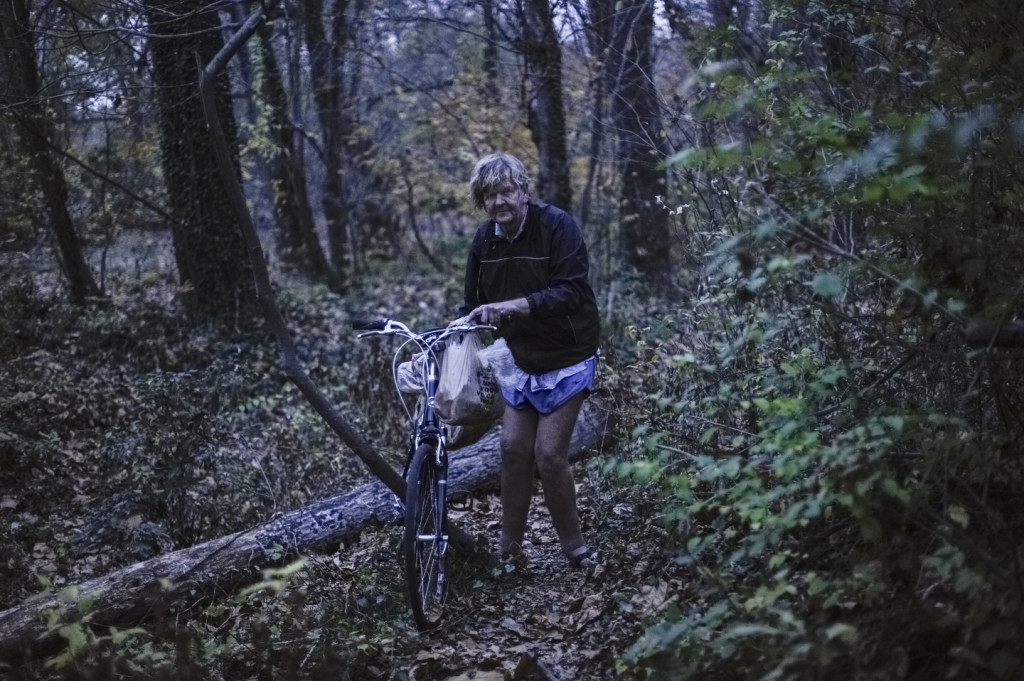
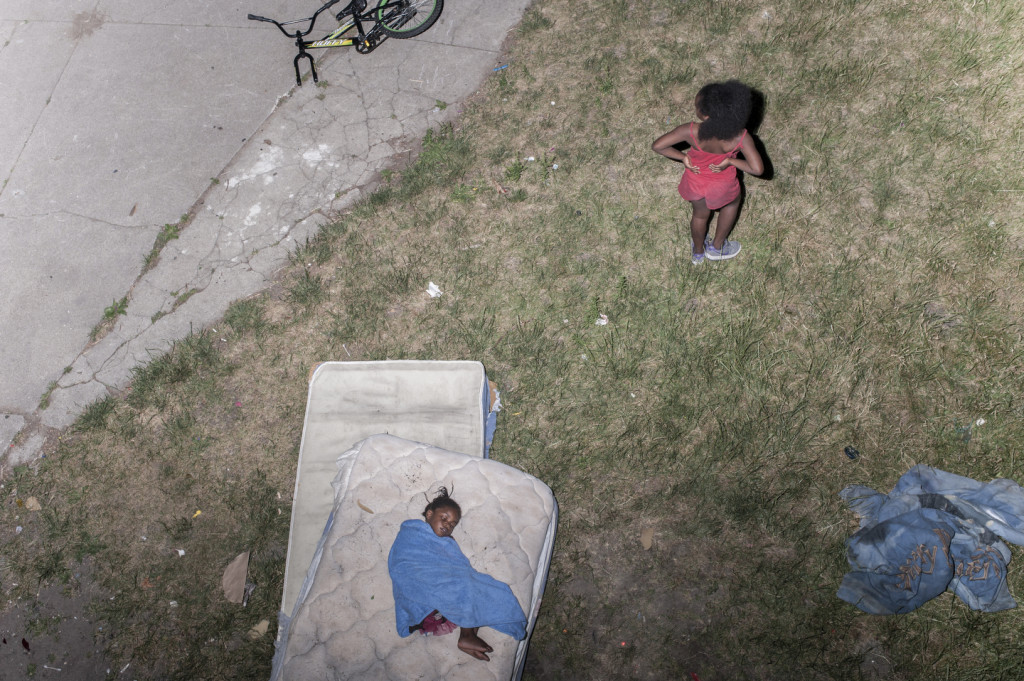
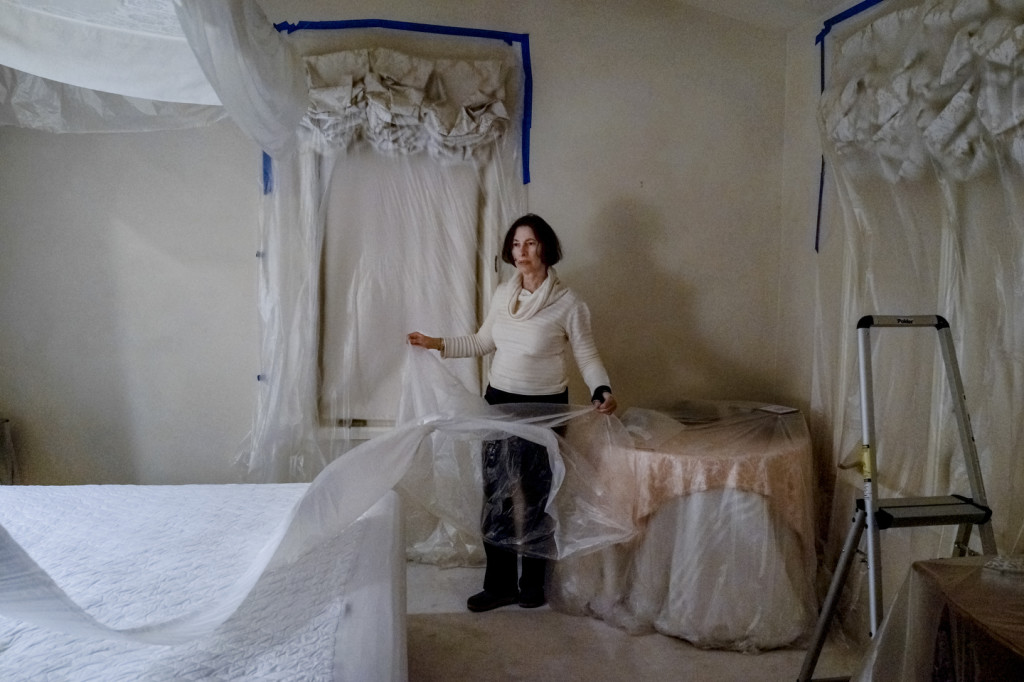
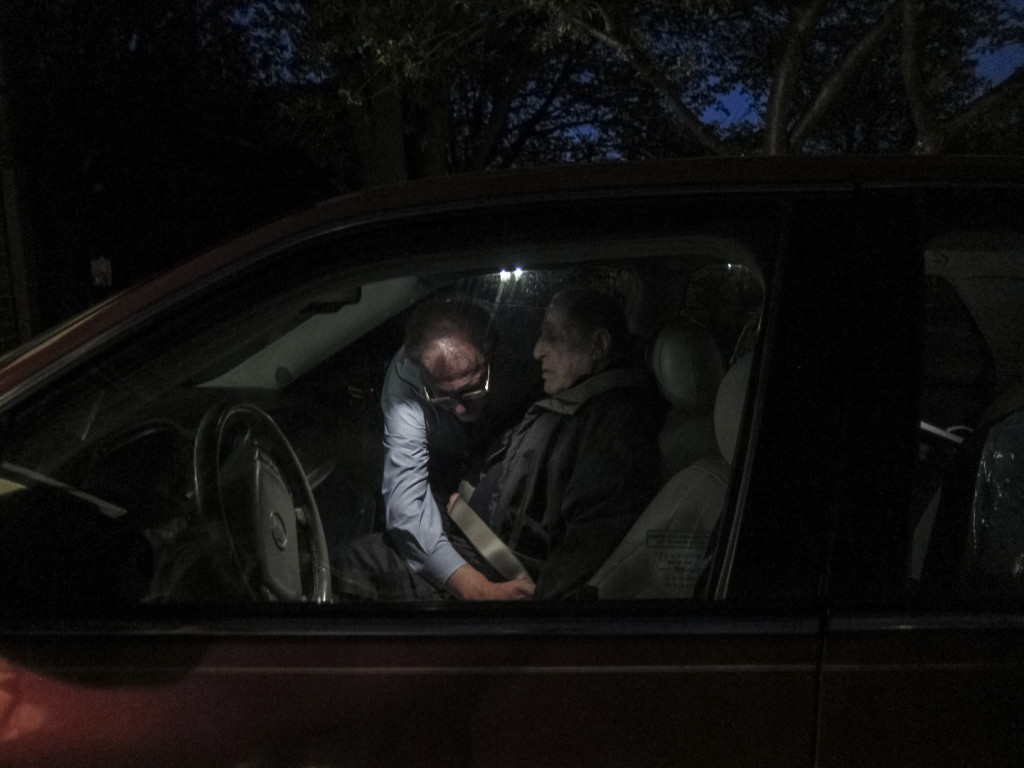
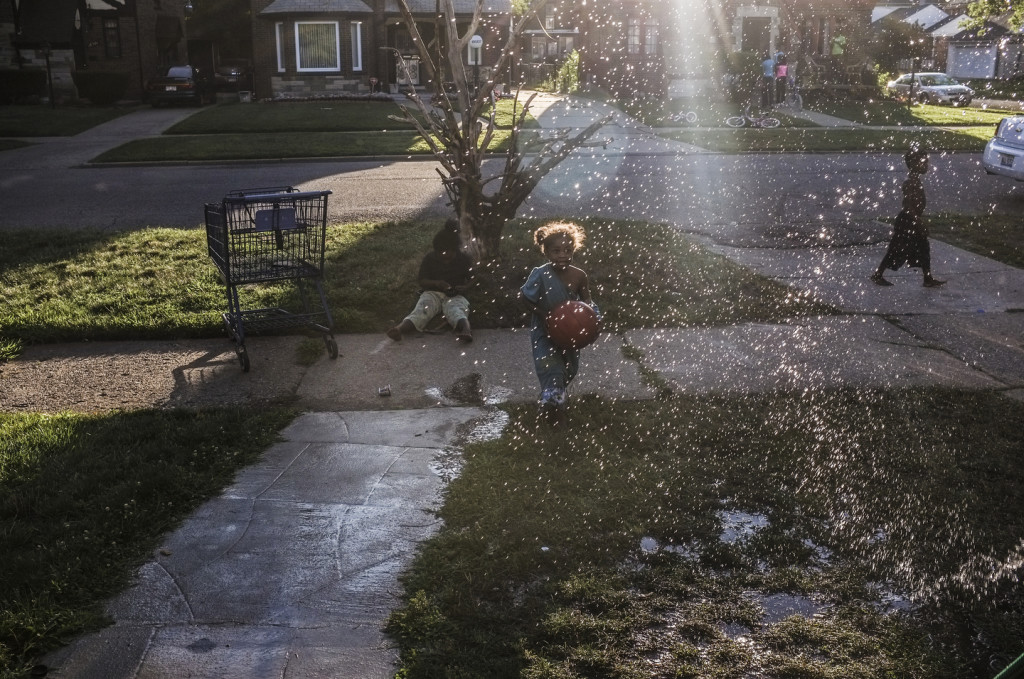

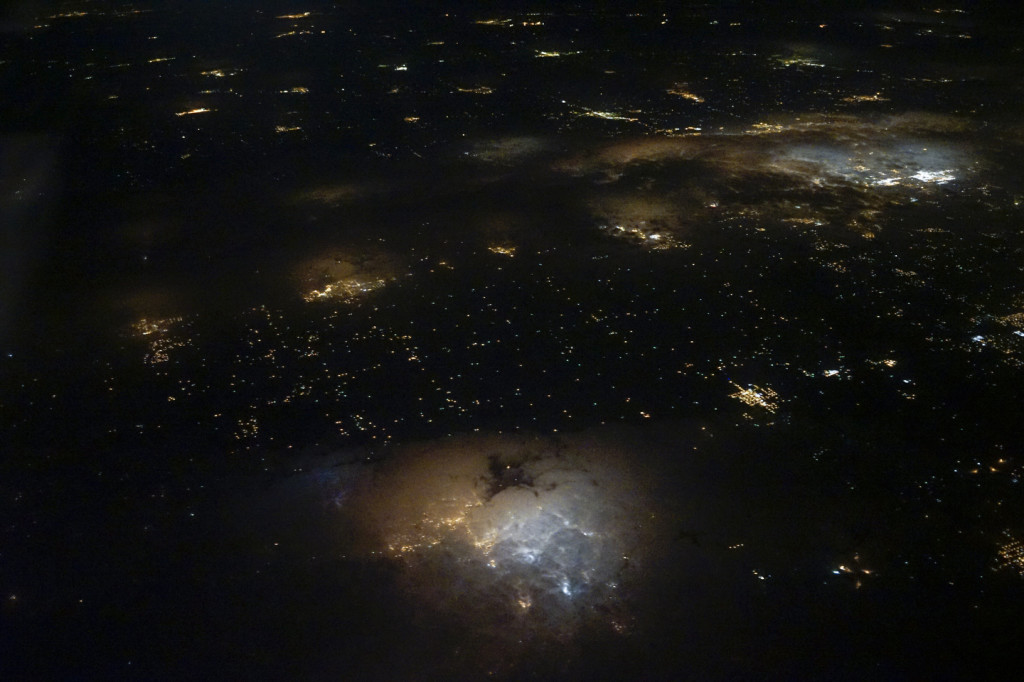
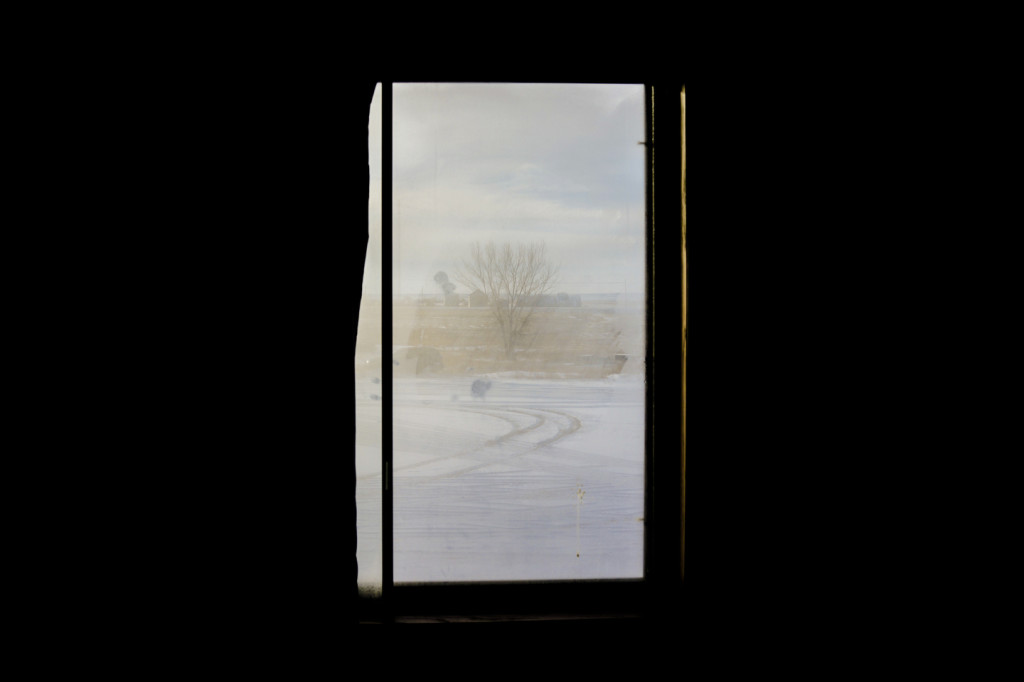
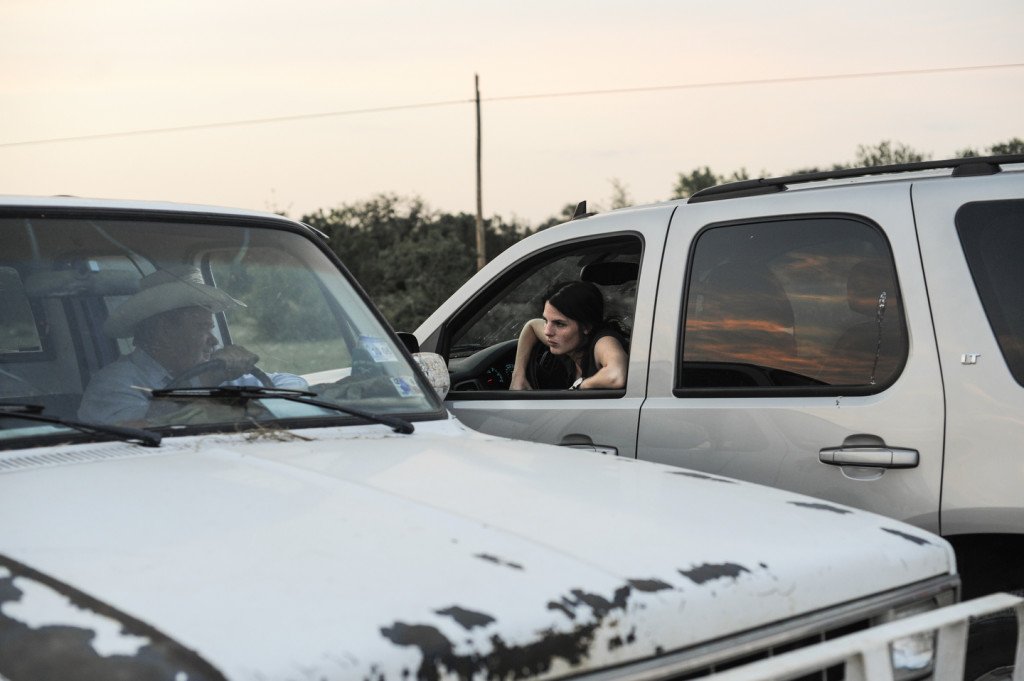
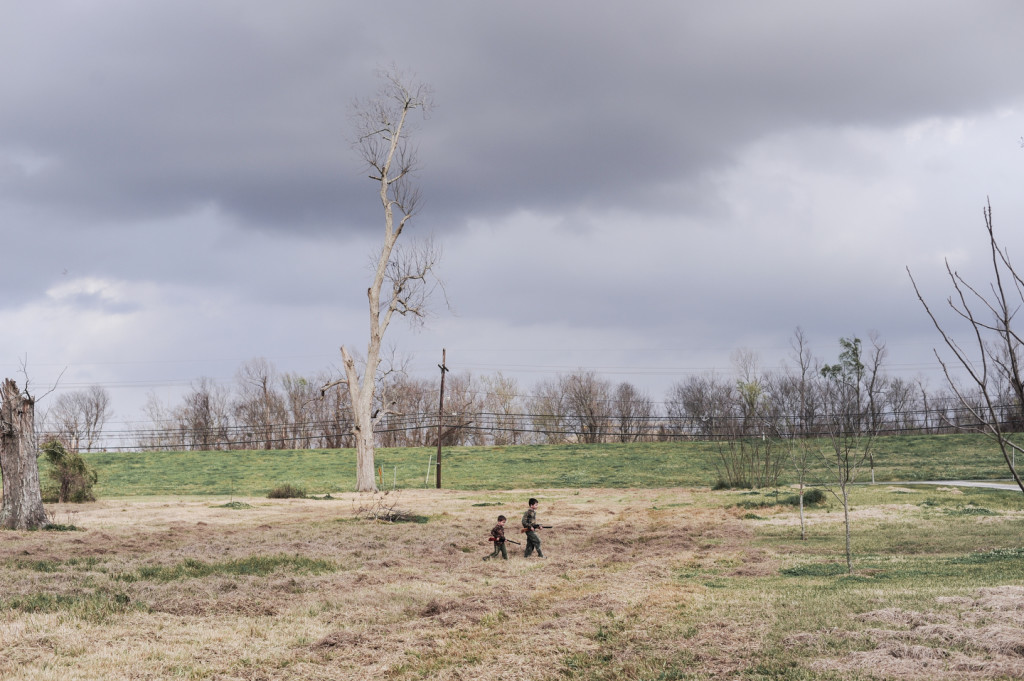
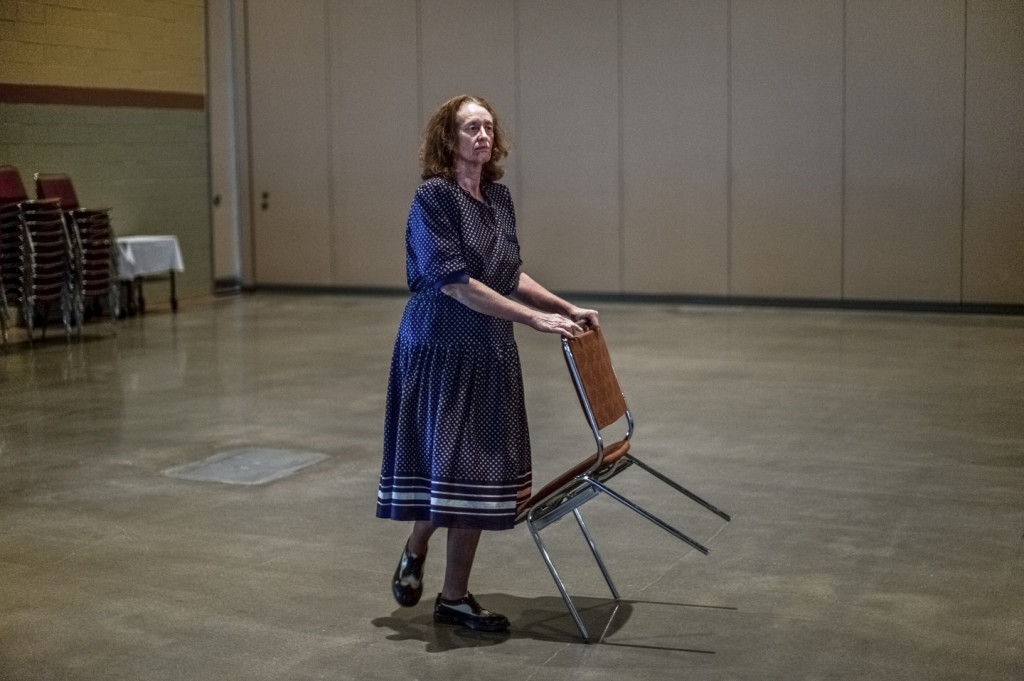

Leave a Reply